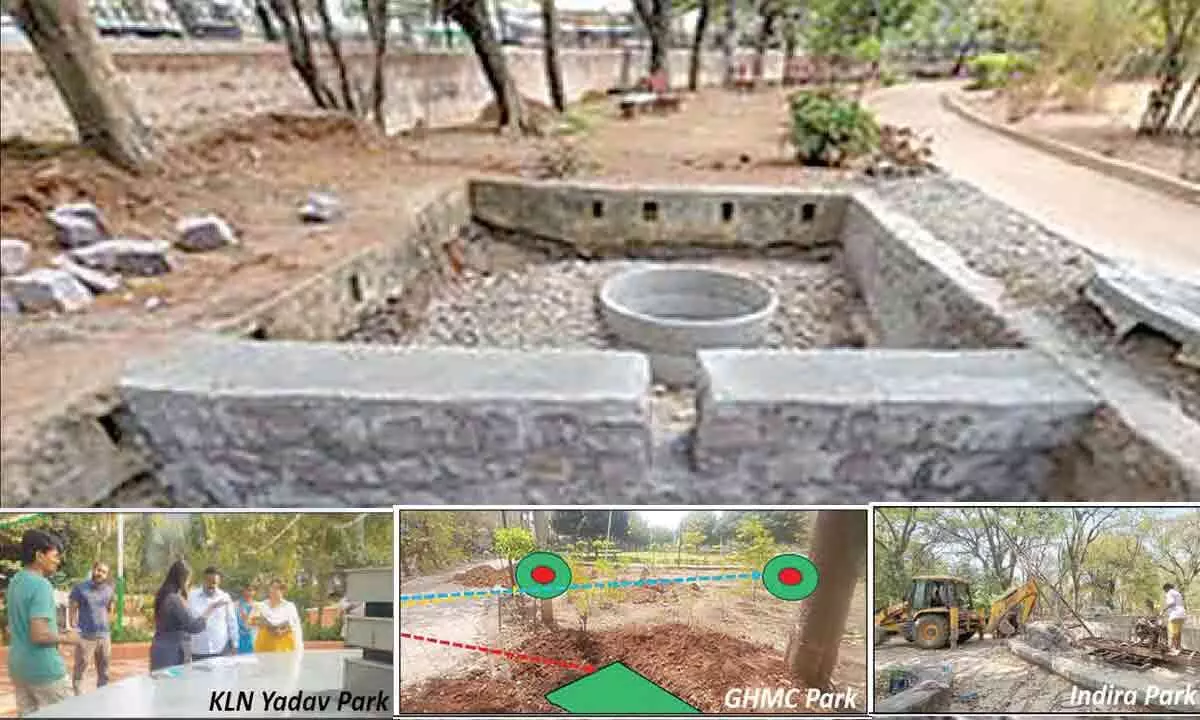Hyderabad: Five parks chosen for tackling urban flooding inching towards completion

- Project aims to conserve groundwater and address urban flooding
- Various interventions tailored to each park’s topography
- MoHUA launches SAM project under AMRUT 2.0 in 10 cities
- ‘The Rainwater Project’ collaborating with GHMC is overseeing the initiative
- Primary objective to mitigate urban flooding, increase groundwater levels
Hyderabad : Five parks in the city that were chosen for the shallow aquifer project are nearing completion. These shallow aquifers aim to conserve groundwater and address urban flooding issues.
Kakatiya Park in Habsiguda, KLN Yadav Park, Indira Park, GHMC Park in Sainikpuri, and Techno Park have been selected as the five parks for the project. Various interventions tailored to the topography of each park will be employed to establish rainwater harvesting systems.
The Ministry of Housing and Urban Affairs (MoHUA), under the Atal Mission for Rejuvenation and Urban Transformation (AMRUT) 2.0, has launched the Shallow Aquifer Management (SAM) project with the National Institute of Urban Affairs. This project spans 10 cities, including Hyderabad. Collaborating with the GHMC, 'The Rainwater Project' is overseeing the initiative, which is scheduled for completion by the last week of April. The project commenced last year, with MoHUA sanctioning approximately Rs 20 lakh. Additionally, the State government has allocated an extra Rs 5 lakh in funding for this endeavour.
Dr N Sunanda Rani, Additional Commissioner of the Urban Biodiversity Wing (UBD), said, “The primary objective of this project is to mitigate urban flooding, which is a significant issue in Hyderabad. Through this initiative, we aim to reduce urban flooding by facilitating water infiltration into the ground, thereby increasing groundwater levels. The selected five parks are situated in low-lying areas prone to waterlogging during monsoon seasons. Upon completion of the project, if successful, we plan to extend similar interventions to other parks across the city.”
Emphasising the significance of the shallow aquifer, the Additional Commissioner, UBD, said, “A shallow aquifer refers to an underground water-bearing layer that is relatively close to the surface. Typically, it lies within the first few hundred feet below ground level.”
Kalpana Ramesh, founder of The Rainwater Project, emphasised the importance of managing shallow aquifers to mitigate flooding and enhance recharge in areas like parks and residential zones. She explained the work carried out at Indira Park, stating, “Our team identified a solution to effectively manage the park's shallow aquifer, allowing it to store a sufficient amount of water. During the project execution, we found that the park's canal was filled with silt, preventing water from infiltrating the ground during the monsoon. To address this issue, we covered the canal with a net and renovated the well.”














